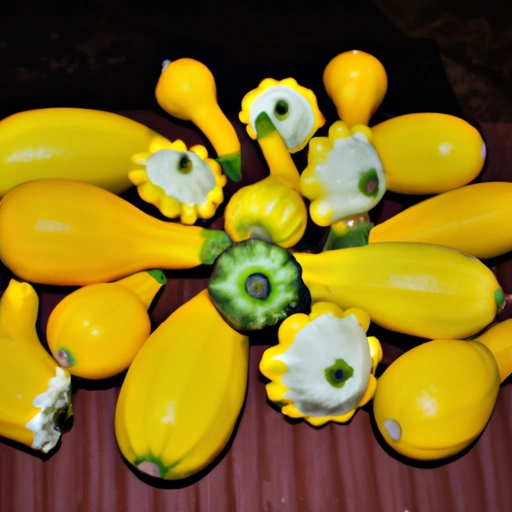Summer Squash
Description

Summer squash is a term that encompasses a variety of squash species that are harvested during the summer months when their rinds are still soft and edible. Unlike their winter counterparts, summer squashes are not intended for long storage and are best enjoyed fresh. Coming in different shapes, sizes, and colors, the most common types include zucchini, yellow squash, and pattypan squash. Summer squash is versatile in the kitchen and can be used in a myriad of recipes.
Common uses
Summer squash is frequently used in salads, as a sautéed side dish, in stir-fries, and baked into bread or muffins. It is also a popular ingredient in soups, stews, and casseroles. Given its mild taste, summer squash pairs well with a wide range of flavors and ingredients.
Nutritional value
Calories
One medium-sized summer squash (about 196 grams or 7 ounces) contains approximately 31 to 33 calories (130 to 138 kJ).
Protein
Summer squash provides about 2 to 2.4 grams (g) of protein per medium squash.
Fat
It is low in fat, with around 0.4 g of fat in one medium-sized squash.
Carbohydrates
Carbohydrates amount to roughly 7 g in a medium squash, with a portion of that being dietary fiber.
Vitamins
Summer squash is rich in vitamins, particularly vitamin C, with one medium squash offering about 29 to 33% of the recommended daily intake (RDI). It also contains vitamin A, vitamin K, and some B vitamins.
Minerals
It provides essential minerals such as potassium, magnesium, and small amounts of iron and calcium.
Health benefits
With its high water content and low calorie count, summer squash is a hydrating and weight-friendly food. The dietary fiber promotes digestive health, while the presence of antioxidants like vitamin C and carotenoids supports the immune system and mitigates oxidative stress.
Potential risks
Summer squash is generally safe for consumption; however, for individuals with specific food allergies or those on a low-oxalate diet, it is best to consume summer squash in moderation or seek advice from a healthcare professional.
Common recipes
Popular dishes using summer squash include Ratatouille, zucchini bread, and squash fritters. It can also be spiralized into 'zoodles' as a low-carb pasta alternative.
Cooking methods
Summer squash can be grilled, roasted, steamed, or sautéed. It's also commonly eaten raw in salads or as crudité with dips.
Pairing with other ingredients
It pairs beautifully with herbs such as basil, thyme, and oregano, and complements proteins like chicken, fish, and tofu. Cheese, particularly Parmesan and feta, is also a delightful match for summer squash.
Summary
Summer squash is a nutritious and adaptable ingredient that fits into a variety of culinary traditions. It's low in calories yet rich in vital nutrients, making it a beneficial addition to any diet. Its gentle flavor and texture make it a versatile vegetable for numerous cooking methods and recipe ideas.